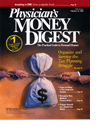Publication
Article
Physician's Money Digest
Close-Up: Postelection Stock Market
Author(s):
n.
Postelection Stocks:The historical data indicating how stocks perform in the year following a US presidential election.
The Outlook
What's so special about the post-presidentialelection stock market? Accordingto an article in ,the average post-World War II stockmarket gain in the year following a US presidentialelection is only 3.6%. History also indicates thatstocks do better when a Democrat is elected president.Then again, the outcome of Washington Redskinshome football games had correctly predicted the winnerof every US presidential election since 1936—until this past November. So, who knows?
But if history repeats itself, it could be a rocky yearfor the stock market, and for investors. How rocky?According to the article, in 1933, President Franklin D.Roosevelt's first year in office, the stock market gained46.6%. Just 4 years later, the first year of Roosevelt'ssecond term, the stock market experienced a 38.6%loss. In other words, anything is possible.
Charting the Results
If you believe in numbers and trends, there is a lot toconsider when it comes to presidential elections and thestock market. Since World War II, the best gain was in1997, the first year of President Bill Clinton's secondterm, when the market rose 31%. Conversely, the worstpostwar loss occurred in 1973, when the market fell17.4% at the beginning of President Richard Nixon'ssecond term. For that matter, history indicates that apresident's first year in office is the worst as far as stockperformance is concerned. The best year is the third,when the market has posted an average gain of 14.7%since 1928. If that pattern holds, get ready for 2007.
The Outlook
The article in calls attention to thecommonly held belief that investors favor theRepublican Party, but that's not what the numbers tellus. For example, since 1929, the election of a Republicanpresident has been followed by an average marketloss of 3.4%. However, when a Democrat haswon the White House, the market's average gain hisfirst year in office has been 9%. In fact, the articlenotes, only in 1977, President Jimmy Carter's firstyear in office, did the stock market fall following theelection of a Democrat.
In 2004, an incumbent Republican was reelected.On all of those occasions since World War II, the markethas posted an average loss of 1.8%. That might notseem like much, but the average is helped by the market's26.3% gain in the first year of President RonaldReagan's second term. By comparison, the marketdeclined 14.3% in the year following President DwightD. Eisenhower's reelection and 17.4% in the first year ofPresident Nixon's second term in office.
Forecasting by Numbers
This past November's presidential election was avery close one, where the swing of one state (Ohio)could have meant significant change—at least as faras history is concerned. For example, according to thearticle, whenever there has been a party change in theWhite House since World War II, the market hasaveraged a 3.2% loss. However, when there was aparty change and a Democrat won the White House(as would have been the case had Senator John Kerrywon the election) the market has experienced a16.3% gain, on average, since 1928 or 6.2% post-World War II. Of course, there's no guarantee thatthere would have been such an increase had SenatorKerry won, but it's interesting to contemplate.
What did happen last November is that PresidentBush was reelected. History tells us that on those occasionswhen a Republican incumbent has won reelection,the market declined an average 1.8% since World WarII. That's the worst stock market performance of lastNovember's three possible election results, the other twobeing a party change with a Democrat winning(+6.2%), or a Republican incumbent defeated (-2.2%).
Based on those historical averages, the article forecaststhat this year's stock market could very well seeonly a single-digit performance move. But, as always,only time will tell.
Pop Quiz
1) The average post-World War II stock market gain inthe year following a presidential election is
- 3.2%
- 3.6%
- 4.2%
- 4.6%
2) The best postelection gain, in 1997, was
- 31%
- 34%
- 37%
- 39%
3) The worst postelection loss, which occurred in1973, was
- 13.4%
- 15.2%
- 17.4%
- 18.3%
4) Historically, the stock market has performed betterin the year following which party's election?
- Republican
- Democrat
5) Since World War II, when a Republican-incumbenthas won reelection, the market has declined anaverage
- 1.8%
- 1.2%
- 2.4%
- 2.9%
Answers: 1) b; 2) a; 3)c; 4) b; 5) a.
